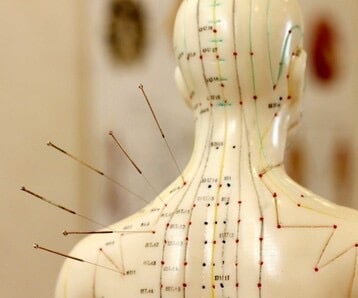About Traditional Chinese Medicine (TCM):
Although our understanding of TCM is ever-growing in our modern western society, sadly there still exists this mysterious shroud, leaving both the public and medical professionals feeling confused and unsure at times. This typically involves the theoretical concepts of qi, meridians/channels, and five elements, to name a few.
At the end of the day, as medical professionals we’re all working on the same thing: the human being. We’re all cut from the same cloth with the same structures and functions so ultimately what differentiates TCM from our traditional western medical understanding is the metaphorical ‘road map’ that we use to work with and navigate this same human constant.
Think of this in the same way as we could describe to someone how to get from ‘point A’ to ‘point B’ on a map by using several different means (e.g. coordinates, distance and angles, physical landmarks).

Related Services
Although these two different understandings do not always explain things in the same manner, in just as many ways they do and what’s most important is that they still get us to our same destination! The biggest problem I see in integrating the two is realizing when and where these medical systems really do in fact happen to be saying and doing the same things. Only once these realizations are made will we be able to collaborate and grow as one.
TCM considers the human from 3 interdependent standpoints: The mental, the internal, and the external. The health of one depends upon the health of the others, and so it's only natural that dysfunction in one area will also reflect as dysfunctions in the others. As a doctor of TCM, I place special attention into all three areas, recognizing how imbalances in the mental and internal physiology (ex. nutritional deficiencies) may be the root or a prime aggravating factor, stopping my clients from recovering from their hip or shoulder pain.
Treating injuries, pain and movement dysfunctions is my primary focus, but I can do a better job at this when I understand the bigger picture and am also treating in the context of one’s entire symptomatology. This is where TCM channels, aka meridians, come into play as they are what often sit at the root of expressing symptoms, body pains, and inhibited muscular function.
Channels (aka Meridians):
When we work with the body at the surface and periphery, for example: manual therapies like massaging the forearm or chiropractic adjustments to the ankle, the insertion of dry needles into the glutes, exercises performed by the shoulder, Graston or IASTM on the shin... with all of these examples we are of course addressing the local tissue, but we are also affecting the channels which communicate information from head to toe!
The Channel system is an eastern medical concept that overlaps with many of our western body systems. It’s an all encompassing way of recognizing that the peripheral systems (the nervous, circulatory, lymphatic, musculoskeletal-fascial systems) are all interconnected. The quality of blood flow to an area is dependent upon the quality of the lymphatic drainage. Quality of muscle function is dependent upon the quality of nervous innervation as well as any degree of inhibition that might be expressed throughout the chain. Quality of blood flow to an area is even dependent upon the quality of nervous communication!
This grand totality of interconnectedness is summarized as being the ‘Channel System’. The channels are very much nervous, and this is why we affect them with touch, a needle, and other sensory stimuli such as movement. In some cases just awareness in itself has the ability to affect great change.
The health of our channel system is all one giant balancing act; like a grand, coherent, reciprocatory web of suspension. Too much or too little of this figurative ‘tension’ hinders the proper functioning resulting in things like nervous inhibitions & facilitations, muscular hyper & hypotonicities, vasoconstriction and dilation, and accumulation of swelling and edema throughout.
There are also internally-based and/or channel-based reasons that specific muscles will present with weakness or be chronically disengaged in specific movement patterns, leading to poorer performance and susceptibility to injuries. In these cases, it's effective to address the channel imbalance. This could mean treating locally but could also mean treating the opposite side from the pain, treating the hip at the foot, or treating the hip at the shoulder or arm. To put it another way, gluteal dysfunction isn’t always going to be successfully treated by isolated hip extension exercises working to maximize gluteal strength.
Channels are also the conduit attributed to the interconnection between mind & body, and internal & external.
